When you are young and don't yet have a long history, there are two possibilities. Firstly, you take your cue from others. Secondly, you create your own history. But what happens when you take your own past with you and become the teacher for others? Walter Schug is a German from Assmannshausen and a winemaker in California's Sonoma Valley. His wines tell the melody of his homeland. You won't find any woody barrique bombs in his wines. What is a philosophy for Schug means a rethink for most Californian winemakers. It is movement in the style of wine - away from wood, towards fruit.
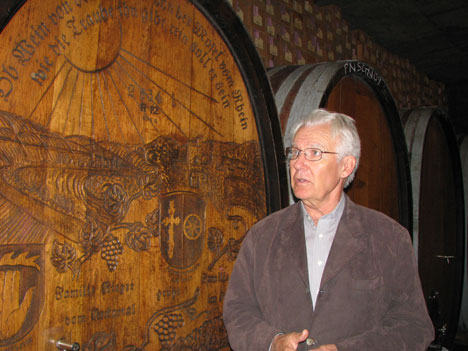 |
| Walter Schug explains his philosophy of making wine. He learned it in Germany |
"You have to think yourself completely into the wine," says Walter Schug, who came to California from the Rheingau in 1961. The 74-year-old grew up in one of the largest wine regions in Germany. As a graduate of the well-known wine academy in Geisenheim, he was firmly convinced of his learned, European style from the very beginning. "A wine wants to live and be lived. Covering it up is not the goal." Only 20 per cent of his 600,000-bottle production is aged in new oak on a small scale. Not so long ago, he was an exotic among Californian winemakers with his wines. Today, he is praised for his vision and style. Because what Schug has been practising for years has now also arrived at many Californian winegrowers in Napa and Sonoma Valley. The trend in wine is moving away from heavy, marmalade-laden alcohol bombs drowned in wood. Schug has an explanation for this change at hand: "There are probably two decisive factors at work here. One is the export to the old world, to Europe, which is still in its infancy. There is no market here for these perfumed wine heavyweights. The other reason is in the food." According to Schug, Americans have finally realised that food and wine go hand in hand and wines in this combination need to be more restrained and elegant.
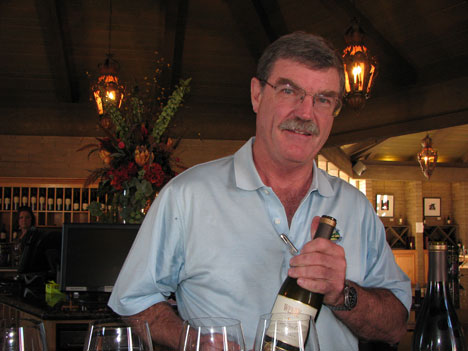 |
| For Eric Wente from Livermore Valley, the process of making wine is like seasoning with salt and pepper. |
A realisation that many winemakers have taken to heart and put into practice. Eric Wente from the traditional Wente Winery in Livermore Valley explains the new approach very clearly: "It's like salt and pepper. You can use it in the right and tasteful measure - or you can over-season it." The fact that he used to make the mistake of "overoaked wine" himself is proven by the 30,000 or so barrique barrels that lie in his cellar. And although he is the fifth generation to run the 126-year-old winery, he, too, is committed to rethinking and speaks of a trend reversal, a change in the orientation of taste, which is also easier to practise thanks to new cultivation methods. In the so-called "Vertical Shot", the vines are uniformed, grown at one height so that the wind and the sun hit the plants evenly. "The fruit is healthier as a result and we can tease out the flavour of the individual wine much better." One of the ways that makes it possible to make the wines more elegant and fruit-driven.
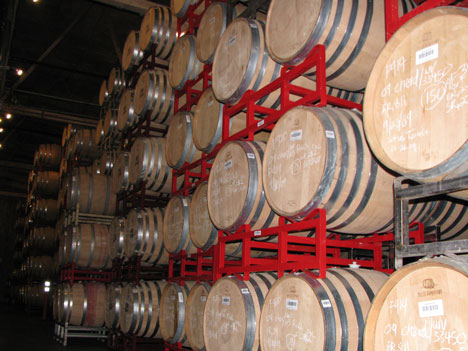 |
| Relics of the past - Wente in the Livermore Valley also relied on 'overoaked' wine for a long time. |
Walter Schug just pats himself on the back when he hears such statements: "We always stuck to our style, even when everyone here went so crazy about barrique." Today, he has the trump card of experience on his side. His whole life has been defined by wine. "I was even baptised with red wine," laughs the 74-year-old. Schug was trained on all German state domains, did an internship in wine bottling in London and then studied in Geisenheim. From there, his father, who also worked with wine, placed him in the USA. After a year's internship, he was infected by the new world of wine that California offered him. He took his wife and his packed VW Beetle with him to the new continent and in 1961 started as the second "winemaker" on a winery in southern California. He worked his way up until his former employer sold him vines. Since the early 1980s, he has only made wine according to his own ideas and the models of the Rheingau. His son also lives with this thinking. "I grew up seeing wine as a food companion. That's a European way of thinking, but it's also mine," says Axel Schug.
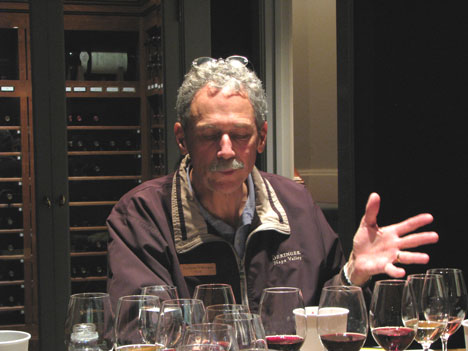 |
| At Beringer in Napa Valley, the connection between food and wine is brought closer to the layman. |
This European mindset is now bringing awakening attention from the old world to many New World winemakers. After all, Californian wines are predominantly known to many wine lovers as heavy, high in alcohol and woody. But the discovery process that the winemakers are going through is remarkable and makes for many exciting wines and projects. For example, Beringer in Napa Valley, not far from Mondavi, uses the newly recognised connection between food and wine for seminars that strengthen wine tourism, a crucial income factor for the valley. The process is simple: six wines, one apple, and quickly even the layman notices that the sweetness of the apple kills the fruit of the Pinot Noir, while in the case of Cabernet Sauvignon it neutralises the incisive tartness. Or that salt combined with lemon enlivens the sweetness of white Zinfandels. "We have learned a lot in recent years," confirms marketing director Peter Willmert, alluding to the major change in style of Beringer wines. "The use of oak has become much more reduced and sensitive, and pure steel ageing has increased disproportionately." Again and again he emphasises the alignment with "Old World" wines.
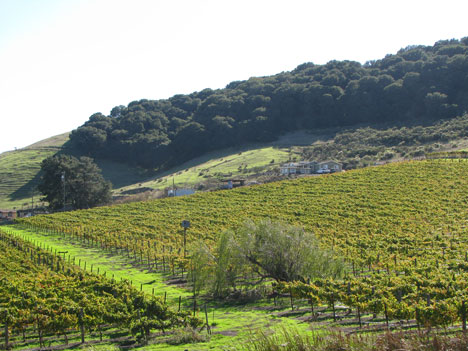 |
| Here in Sonoma Valley, Walter Schug combines German wine thinking with Californian climate conditions on his land. |
Is that the solution to the problem? To assimilate? One thing is certain: Californian wine is often still misunderstood in Europe. Too few winemakers reach the Old World. Many hardly export at all, and if they do, it is mostly to Canada or Asia. The German consumer usually only knows the big names like Gallo, who produce wines especially for export according to European tastes. But there are also mass-produced wines that promise the exoticism of California at low prices in the supermarket. But it is now up to the winegrowers in the two disparate valleys of Napa and Sonoma, with their many different and distinctive microclimates, to continue on the path they have chosen and to give the still young wine country its own identity that is nevertheless compatible. The task is not to unite with the old wine world of Europe, but to develop an independence that skilfully captures the climatic conditions in the bottle. Of course they exist, the bombs with a lot of wood and a lot of alcohol that glide over the tongue like liquid jam and fuel the prejudice against Californian wines. But the majority of winemakers have opted for a development and reinvention that provides many positive surprises. If winemakers like Walter Schug have their way, wine from the golden state will in future be ennobled with the words elegant, fine and exciting. And then the Californians will not only have brilliantly solved a very difficult task, but also created a story in its own right.